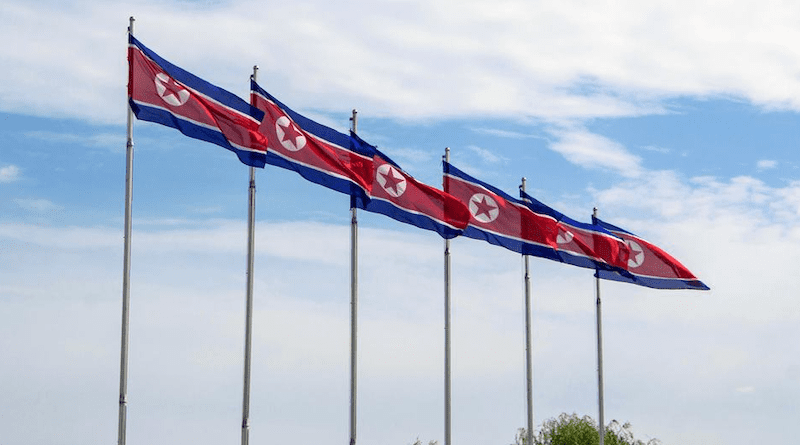North Korea Fires 200 Shells Into Sea Off Western Coast
By RFA
By Lee Jeong-Ho
North Korea launched some 200 artillery shells into waters off its western coast on Friday near the inter-Korean maritime border of the Northern Limit Line, or NLL, according to the South’s Joint Chiefs of Staff. The area is near South Korea’s Baengnyeong and Yeonpyeong islands.
The shells fired between 9 a.m. and 11 a.m. Seoul time caused no casualties to civilians or military personnel in the South, the JCS said in the statement. In response, Seoul directed residents on the islands to seek shelter, as it informed its plans to conduct “naval fire” drills by its troops later in the afternoon.
The North’s Korean People’s Army, or KPA acknowledged in a statement what they called a “live-shell firing drill,” but denied that the intent was to scare residents of the islands.
“The claim of the military gangsters of the Republic of Korea that the KPA fired naval artillery shells into the waters north of [Baengnyeong] Island and [Yeonpyeong] Island, a so-called buffer zone in the West Sea of Korea, is a far-fetched assertion to mislead the public opinion, and their evacuation and firing in return are also a trite method to throw the responsibility for the escalating tension on the KPA’s drill,” said the statement, which was published by the state-run Korean Central News Agency. “The direction of naval live-shell firing doesn’t give even an indirect effect on [Baengnyeong] and [Yeonpyeong] islands.”
The artillery barrage came as U.S. and South Korean military forces began their first joint drills for this year on Thursday, involving the U.S. Air Force asset, Rivet Joint, a reconnaissance aircraft designed for intelligence collection.
But State Department spokesman Matthew Miller said the United States “harbors no hostile intent” against Pyongyang and called on it “to refrain from further provocative, destabilizing actions and return to diplomacy.”
“In particular, we encourage [North Korea] to engage in substantive discussions on identifying ways to manage military risks and create lasting peace on the Korean Peninsula,” Miller said.
He added the United States was seeking to “coordinate international responses” to the repeated missile launches and was working with Japan and South Korea “about how to best engage” the North.
On Nov. 23, 2010, the North shelled Yeonpyeong island, killing four South Korean residents and injuring 19, while causing severe damage to the entire island. South Korea returned fire shortly afterward in an incident that caused inter-Korean relations to sour sharply.
‘Respected child’
Hours before the shells were fired, North Korea’s state-run Korean Central News Agency reported that leader Kim Jong Un and daughter Ju Ae visited an intercontinental ballistic missile, or ICBM, mobile launcher vehicle factory, a move seen by an expert that signals a strong commitment to ramp up the production of these vehicles.
Kim and his “respected child” Ju Ae “conducted an on-site guidance at an important military vehicle production factory,” the report said Friday.
Kim and the daughter, accompanied by major ruling party officials including the powerful sister Kim Yo Jong, observed “various military vehicles produced at the factory, gaining a detailed understanding of their production status,” KCNA added.
Photos released by KCNA show the North Korean leadership standing before mobile launch vehicles, which could be equipped to launch its latest ICBM, the Hwasong-18.
The use of transporter erector launchers, or TELs, complicates the ability of the United States and its regional allies to carry out pre-emptive strikes, as these mobile platforms offer enhanced concealment and mobility for missile deployments.
“This factory holds an extremely important position and plays a pivotal role in the historic endeavor of bolstering our national defense,” said Kim Jong Un, as cited by KCNA.
“In the current grave situation, where we must be more resolutely prepared for military confrontation, the contribution of this factory to our defense capabilities is of paramount importance,” he said.
North Korea must also further modernize its military capability, he added.
Yang Moo-jin, a professor at the University of North Korean Studies in Seoul and advisor to South Korean administrations, said that Pyongyang is determined to show that its stance on nuclear confrontation with the U.S. is a deeply serious commitment rather than mere rhetoric.
“Kim Jong Un’s display of ICBM mobile launcher vehicles signals a strong commitment to ramp up the production of these vehicles, in step with the increased manufacturing of nuclear missiles,” Yang said, adding that the interdependence between missiles and their launchers is “akin to that of a thread and needle” – each crucial to the other’s operation.
“Historically, North Korea relied on importing missile launch vehicles. However, through domestic production and customization, it has significantly improved the mobility, stealth, and quick deployment of its missile arsenal,” said the pundit.
Baekdu bloodline
The expert also noted the significance of Ju Ae accompanying the leader, saying her presence at military facilities underscored a specific symbolic message.
“It indicates that the commitment to bolstering national defense will persist, adhering to the doctrine that fortifying defense is a duty of the Baekdu bloodline,” Yang said.
The Baekdu bloodline, named after North Korea’s highest mountain Baekdu, refers to the lineage of North Korea’s ruling Kim family, as the hereditary leaders of the country.
The nominee to be the next head of South Korea’s spy agency saidThursday that he sees Ju Ae as the “probable successor” of North Korea, marking the first time the agency has officially indicated her possible succession of power.
Radio Free Asia reported in November last year that the daughter received a new official title “Morning Star of Korea” – an apparent and deliberate parallel to the country’s founding leader Kim Il Sung.
The daughter, born in 2013, has started making public appearances since November 2022, accompanying Kim Jong Un in North Korea’s various high-profile occasions, including his visiting of missile launching sites.

